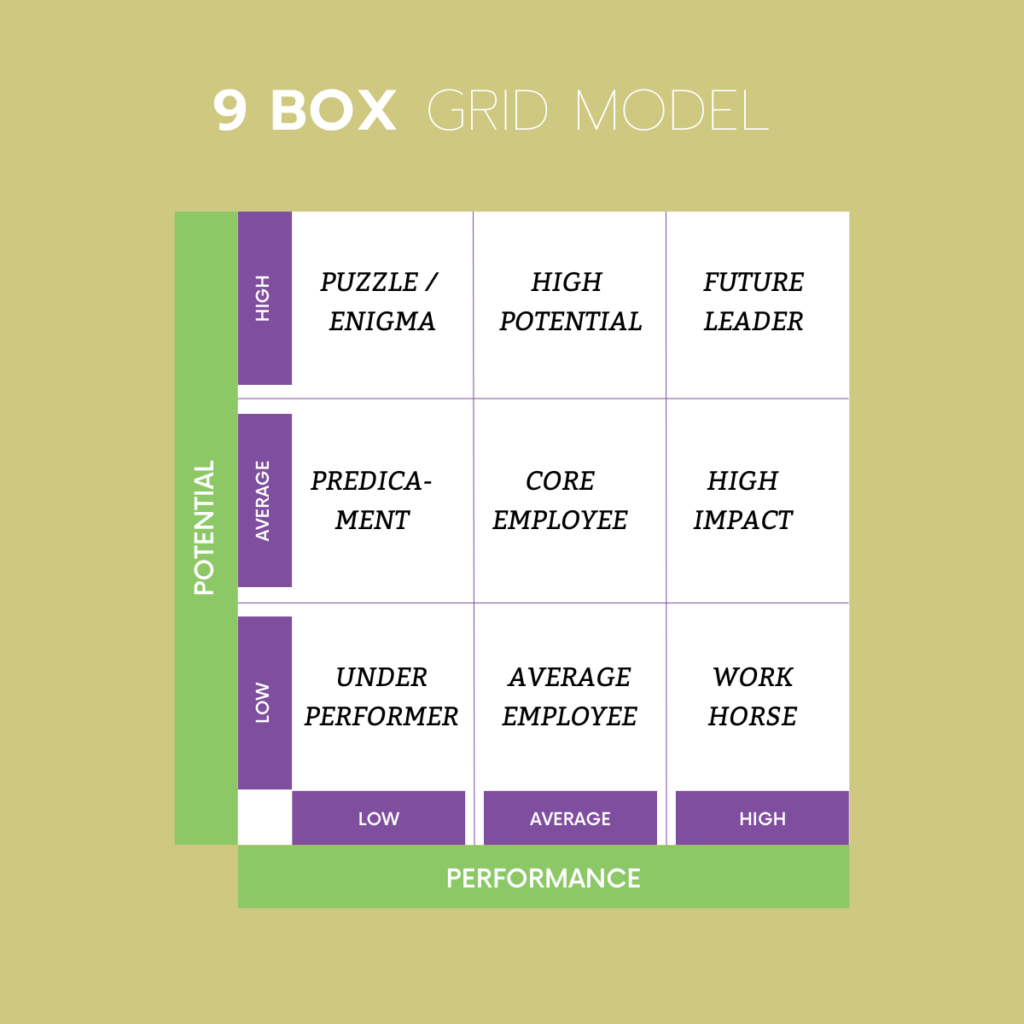The 9-box grid serves as a visual tool in talent management, evaluating employees on two critical dimensions: current performance and future potential. Essentially, it comprises a 3×3 grid featuring nine squares, each indicating a distinct combination of performance and potential.
Table of Contents
- Introduction
- Understanding The 9-Box Grid For Talent Evaluation
- How To Leverage The 9-Box Grid
- Key Factors to Consider When Using the 9-Box Grid
- Conclusion
Introduction
In the intricate world of talent management, organizations seek effective tools to assess and strategize their workforce. The 9-Box Grid emerges as a powerful framework, providing a visual representation of an individual’s performance and potential. This article delves into the meaning and strategic impact of the 9-Box Grid, exploring its features, advantages, and its transformative role in talent management.
Understanding The 9-Box Grid For Talent Evaluation
- The X-axis (Current Performance): This axis spans the spectrum from low performers to high performers, encompassing categories such as “Needs Improvement,” “Meeting Expectations,” and “Exceeds Expectations.”
- The Y-axis (Future Potential): This axis centers on an employee’s long-term growth prospects, delineated by categories like “Low Potential,” “Moderate Potential,” and “High Potential.”

How To Leverage The 9-Box Grid
- Identifying high-potential employees: Those positioned in the upper right box (high potential, high performance) emerge as ideal candidates for leadership development and succession planning.
- Targeting development efforts: Different boxes signify distinct needs. The grid aids in tailoring training and development programs to address specific strengths and weaknesses identified for each employee.
- Making talent management decisions: The grid serves as a valuable tool for decisions related to promotions, compensation adjustments, and potential terminations, providing a structured approach to talent management within the organization.
Key Factors to Consider When Using the 9-Box Grid
- Mitigating Bias through Objectivity and Multiple Raters: The 9-box grid’s susceptibility to subjectivity underscores the importance of employing objective criteria and involving multiple raters in the assessment process.
- Using the Grid as a Discussion Starter, Not a Definitive Verdict: The grid is a starting point for discussion, rather than a conclusive judgment. This underscores the need for regular performance reviews and development conversations to complement its insights.
- Integration with Other Tools in Talent Management: It is important to acknowledge that the 9-box grid is just one tool among many in talent management. Hence, organizations need to combine it with other assessments and development initiatives for a comprehensive understanding of an individual’s capabilities and potential.
Conclusion
In conclusion, the 9-Box Grid stands as a transformative tool in talent management, offering a visual and strategic blueprint for assessing and developing an organization’s workforce. Its features, including objective performance measurement, workforce planning, and leadership gap identification, contribute to its advantages in talent development and succession planning. As organizations continue to navigate the complexities of talent management, the 9-Box Grid emerges as one of several tools to help shape the future of strategic decision-making in the realm of human resources.

